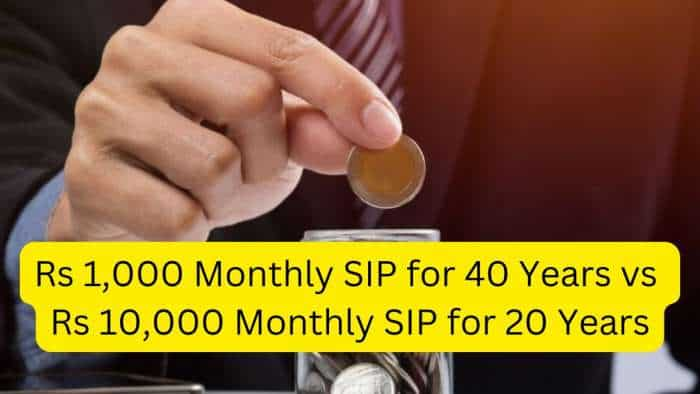Moody's upgrade for India positive, but short-term reality, risks remain
After more than a decade, India witnessed first upgrade by Moody's Investor service on its economic outlook. This is expected to be followed by another two major rating agencies.

Key Highlight:
- Moody's upgraded India's rating to “Baa2” from “Baa3"
- India's GDP growth seen reaching at 7.5% in FY19
- Moody's provide positive outlook for India ahead
After jumping 30 spots and entering into the top 100 in the World Bank’s Ease of Doing Business global rankings for the first time, the next big thing for India was Moody's Investor Services up-gradation in ratings, indicating a positive long-term economic growth.
On November 17, Moody's upgraded India to “Baa2” from “Baa3” and changes its outlook to “Positive” from “Stable”.
This would India's first upgrade after thirteen years. Last time when India saw higher ratings was on January 2004.
What does an upgrade means?
Usually, a sovereign credit rating upgrade means that risks associated with a sovereign default have moderated. This leads to a decline in the risk free rate (i.e. government bond yields). And a lower risk free rate, in turn, would lead to a decline in borrowing costs for corporates.
When Moody's upgraded India's rating, the 10-year G-sec yield, which had increased by 30 basis points over the last 30 days, reacted favorably, opening 10 basis points lower at 6.96%, but lost the gains during the course of the day and closed at 7.05%, similar to 7.06% on the previous day. Even Indian rupee appreciated by 0.5% against US dollar on the same day.
What's ahead?
Firstly, the move has been taken as positive outlook for India's long-term economic growth.
Sahil Kapoor and Shobana Krishnan, Economists at Edelweiss Financial Services, said, “In this regard, change in outlook with an upgrade for India came in as a welcome. In their assessment, Moody’s has acknowledged reforms by the government and long run potential in the economy.”
However, analysts also believe that near-term concerns still continue to haunt India's growth.
Suvodeep Rakshit, Upasna Bhardwaj and Madhavi Arora, analysts at Kotak Institutional Equities, maintained a negative bias in the short run due to risks emanating from fiscal slippage, upward trending inflation trajectory, higher crude oil prices, end of rate cut cycle and tightening of domestic liquidity.
The trio of Kotak for fiscal target said, “We expect the government’s fiscal deficit in FY2018 at 3.5% as against the budgeted 3.2% given the downside risks on receipts specifically from lower RBI dividend, excise duty cut on petroleum products, and GST collections.”
Meanwhile, India's consumer price index (CPI) or retail inflation reached at seven-month high and came in at 3.58% in the month of October 2017 - higher from 3.28% in September 2017 but lower as against 4.20% in the similar month of the previous year.
The Reserve Bank of India continued to fear that rising consumer prices will threaten the central bank's inflation target of 4% which led the monetary policy committee (MPC) to vote for status quo in the October 2017 policy.
RBI said that inflation is expected to rise from its current level and range between 4.2-4.6% in the second half of this year, including the house rent allowance by the Centre.
In regards to foreign flows and debt market, analysts at Kotak mentioned that there is currently limited room as the GSec limits are mostly utilized. However, positive sentiments may help in utilization of open SDL limits (Rs 25,200 crore) and the remaining general category limits in GSec (Rs 3,100 crore) and corporate bonds (Rs 4,000 crore).
However, continued FPI equity inflows will keep alive the risks of further OMO sales, implying higher supply pressure on bonds in the near term.
Meanwhile, Nikhil Gupta and Rahul Agrawal, analysts at Motilal Oswal, do not expect another upgrade from Moody's in near future for the country.
They said that since neither a sharp decline in general government debt nor a strong revival in investments is on the anvil, another upgrade not in near term. Instead, they believe since other rating agencies have not taken any rating action for more than a decade, it might be a time to revisit India’s sovereign ratings.
Get Latest Business News, Stock Market Updates and Videos; Check your tax outgo through Income Tax Calculator and save money through our Personal Finance coverage. Check Business Breaking News Live on Zee Business Twitter and Facebook. Subscribe on YouTube.
RECOMMENDED STORIES

Power of Rs 3,000 SIP: In how many years, Rs 3,000 monthly investment can generate corpuses of Rs 2 crore and Rs 3 crore? Know here

Power of Compounding: Rs 5 lakh lump sum investment in 3 flexi schemes has grown to at least Rs 15.5 lakh in 5 years; see list

Power of Compounding: How can you create Rs 5 crore, 6 crore, 7 crore corpuses if your monthly salary is Rs 20,000?

Rs 1,000 Monthly SIP for 40 Years vs Rs 10,000 Monthly SIP for 20 Years: Which can give you higher corpus in long term? Calculations inside

Top 7 ETFs With Highest Returns in 1 Year: No. 1 ETF has turned Rs 8,78,787 investment into Rs 13,95,091; know how others have fared
12:51 PM IST








 India to continue resilient growth in 2025, RBI may do modest interest rate easing: S&P
India to continue resilient growth in 2025, RBI may do modest interest rate easing: S&P Relentless FII sellings now over as Indian economy remains resilient
Relentless FII sellings now over as Indian economy remains resilient Fiscal deficit at 46.5% of full-year target at Oct-end: Government data
Fiscal deficit at 46.5% of full-year target at Oct-end: Government data $8 trillion of $14 trillion invested in India since 1947 came in last 10 years
$8 trillion of $14 trillion invested in India since 1947 came in last 10 years Private consumption driving growth in Q3 with rural India taking lead: RBI
Private consumption driving growth in Q3 with rural India taking lead: RBI